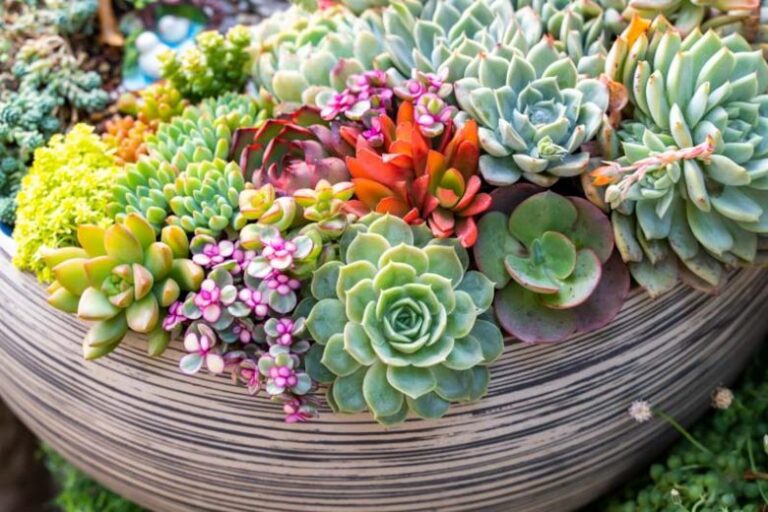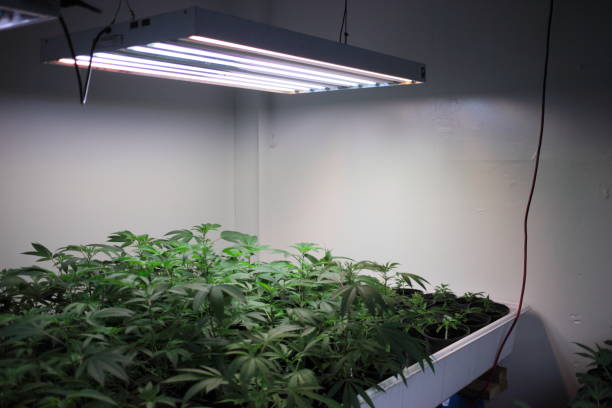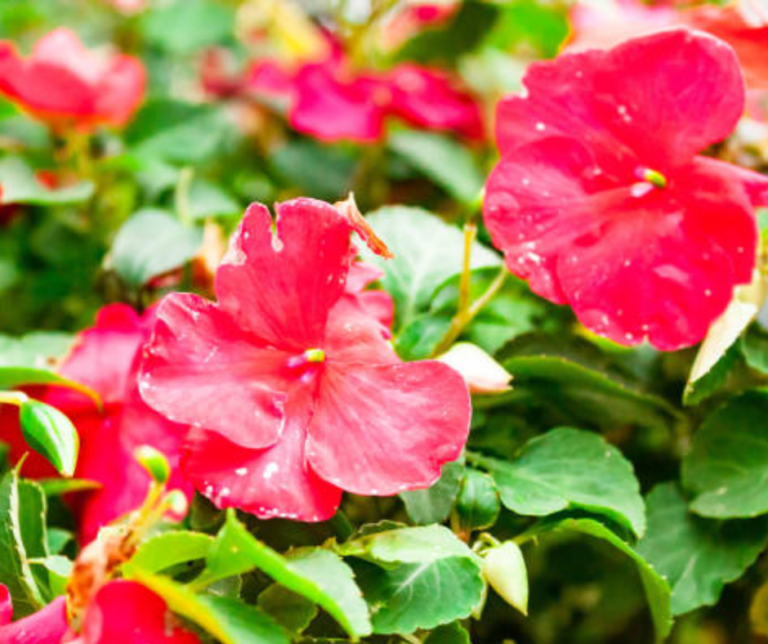Dieffenbachia Plant Mastery: Dumb Cane Care
Table of Contents
Key Considerations for Dumb Cane Care
Dieffenbachia, commonly known as Dumb Cane, is a popular houseplant valued for its attractive foliage. When it comes to caring for your Dieffenbachia plant, there are several key considerations to keep in mind. Firstly, ensuring adequate lighting is crucial for the plant’s growth. Dieffenbachia thrives in bright, indirect light but can also tolerate lower light conditions. Placing your plant near a window where it can receive filtered sunlight is ideal. However, be cautious of direct sunlight, as it can scorch the leaves.

In addition to lighting, maintaining the proper temperature range is essential for the health of your Dumb Cane plant. Dieffenbachia prefers temperatures between 60-80°F (15-27°C) during the day and slightly cooler temperatures at night. Avoid exposing the plant to drastic temperature fluctuations, as this can stress the plant and lead to issues such as leaf drop. By providing the right lighting and temperature conditions, you can help your Dieffenbachia thrive and display its lush foliage to its full potential.
Best Lighting Conditions for Dieffenbachia Plants
Dieffenbachia plants thrive in bright, indirect light, making them ideal for areas with filtered sunlight or spots further away from windows. Direct sunlight can scorch their leaves, causing irreversible damage. Placing your Dieffenbachia in a well-lit room with curtains or blinds to soften the light can help maintain its health and prevent leaf burn. Aim for around 100-200 foot-candles of light for optimal growth, which is equivalent to low to medium light conditions typically found in indoor spaces.
It’s essential to monitor the light levels your Dieffenbachia receives throughout the day. Consider using a light meter to measure the foot-candles in different areas of your home and adjust the plant’s placement accordingly. Remember that lighting conditions can vary based on the season, so be prepared to move your plant if necessary to ensure it continues to receive the right amount of light for healthy growth. By providing the appropriate lighting conditions, you can help your Dieffenbachia thrive and enhance the aesthetic appeal of your indoor space.

Optimal Temperature Range for Dumb Cane
Dumb Cane plants, scientifically known as Dieffenbachia, thrive within a specific temperature range that mimics their natural habitat conditions. Maintaining the optimal temperature is crucial for the health and growth of these tropical beauties. Ideally, aim to keep your Dumb Cane plant in an environment where temperatures range between 65°F to 75°F (18°C to 24°C) during the day. At night, slightly cooler temperatures around 60°F to 70°F (15°C to 21°C) are preferable. Consistency in temperature is key, as drastic fluctuations can stress the plant and hinder its development.
Extreme temperatures, whether too hot or too cold, can have detrimental effects on Dumb Cane plants. Avoid exposing them to temperatures below 50°F (10°C) or above 90°F (32°C) for prolonged periods. Even though Dieffenbachia plants can tolerate short-term temperature fluctuations, prolonged exposure to extremes can lead to stunted growth, leaf yellowing, wilting, or even eventual death. Monitoring the temperature around your Dumb Cane plant and making necessary adjustments will help ensure its vigor and longevity.
The table shows the optimal temperature range for Dumb Cane (Dieffenbachia) plants:
| Aspect | Optimal Temperature Range |
| Temperature | 65°F to 75°F (18°C to 24°C) |
| Humidity | Higher humidity levels are preferred. |
| Adjustment | Keep your home’s temperature within the optimal range for Dumb Canes. |
Dumb Cane plants, being tropical, thrive in warm environments. They don’t tolerate cold drafts or temperatures below 50°F well.
Watering Schedule for Keeping Your Dieffenbachia Thriving
When it comes to watering your Dieffenbachia plants, striking the right balance is crucial for their well-being. Overwatering can lead to root rot and other fungal issues, while underwatering can cause the leaves to droop and wilt. It’s essential to check the moisture level of the soil regularly before watering. Inserting your finger about an inch deep into the soil can give you a good indication of whether it’s time to water your plant. If the soil feels dry at that depth, it’s usually a sign that your Dieffenbachia needs watering.
Remember, Dieffenbachia plants prefer slightly moist soil, but they don’t like to be waterlogged. Ensuring proper drainage is key to preventing water from accumulating at the roots. When watering, make sure to water thoroughly until you see water draining out of the bottom of the pot. Allow any excess water to escape to avoid water stagnation, which can suffocate the roots. It’s important to water your Dieffenbachia consistently but also to adjust the frequency based on the plant’s specific needs and environmental conditions. By paying attention to your plant’s individual requirements, you can help it thrive and avoid common watering pitfalls.
Choosing the Right Soil Mix for Your Dumb Cane
For optimal growth and health of your Dumb Cane plant, choosing the right soil mix is crucial. Dumb Canes thrive in well-draining soil that retains moisture without becoming waterlogged. A recommended soil mix for Dumb Canes is a blend of peat moss, perlite, and pine bark for adequate aeration, drainage, and moisture retention. This combination provides a balanced environment for the roots to develop without the risk of root rot, a common issue for this plant species.
Additionally, incorporating organic matter such as compost or well-rotted manure can enrich the soil mix with essential nutrients for the Dumb Cane’s growth. These organic components help in sustaining the plant’s nutritional needs and promoting overall vigor. It is essential to ensure the soil mix is loose and light, allowing the roots to breathe and access nutrients effectively. By selecting a well-balanced soil mix, you can create an ideal growing medium that supports the healthy and vibrant growth of your Dumb Cane plant.

Proper Humidity Levels for Dieffenbachia Plants
Maintaining proper humidity levels is crucial for the health and well-being of your Dieffenbachia plants. These tropical beauties thrive in environments with moderate to high humidity, typically between 50% to 80%. Inadequate humidity can lead to issues such as brown leaf tips, leaf drop, and overall plant decline. To create the ideal humidity level for your Dieffenbachia, consider using a humidifier, pebble trays filled with water, or regular misting to ensure a tropical-like atmosphere for your plant.
Overexposure to dry air can cause stress to your Dieffenbachia, impacting its growth and overall appearance. By monitoring and maintaining the appropriate humidity levels, you can help your plant flourish and showcase its vibrant foliage to its fullest potential. Remember to keep an eye on the humidity levels in your plant’s environment, adjusting as needed to provide a comfortable and thriving space for your Dieffenbachia to thrive.
Fertilizing Tips for Healthy Growth
When fertilizing your Dieffenbachia plant for optimal growth, it is crucial to choose a balanced fertilizer with equal parts of nitrogen, phosphorus, and potassium (N-P-K). These essential nutrients play a significant role in promoting healthy foliage and overall plant vigor. Aim to fertilize your Dieffenbachia every 4-6 weeks during the growing season, typically from spring to early fall, to support steady growth and vibrant leaf coloration. Over-fertilizing can lead to nutrient imbalances or burn the plant’s roots, so always follow the manufacturer’s guidelines for proper application.
In addition to regular fertilization, consider supplementing your Dieffenbachia’s nutrient intake with micronutrients like iron, magnesium, and calcium, which are essential for various physiological processes within the plant. These micronutrients can often be found in specialized plant fertilizers or can be incorporated through organic amendments like compost or manure. Remember to adjust your fertilization routine based on the plant’s response to ensure healthy growth and minimize the risk of nutrient deficiencies or toxicities.
Here is a table summarizing the essential tips for fertilizing your Dumb Cane:
| Aspect | Fertilizing Tips |
| Timing | Fertilize during the growing season, typically from spring through summer. Reduce frequency during fall and winter. |
| Fertilizer Type | Choose a liquid fertilizer specifically formulated for indoor or tropical plants. Alternatively, use granular fertilizers designed for these plant types. |
| Application | Liquid Fertilizer: Mix according to package instructions and apply around the base of the plant. Granular Fertilizer: Sprinkle on top of the soil and water in. |
| Frequency | Liquid Fertilizers: Apply every two weeks during the growing season. Granular Fertilizers: Apply every four to six weeks. Avoid over-fertilization. |
| Signs of Over-Fertilization | Look out for burnt or yellowing leaves, wilting, or stunted growth. If observed, stop fertilizing and flush excess fertilizer with water. |
Pruning and Propagation Techniques for Dieffenbachia
Pruning is a crucial aspect of maintaining the health and aesthetic appeal of your Dieffenbachia plant. Regular pruning helps to promote new growth, maintain a desirable shape, and remove any dead or damaged leaves. When pruning your Dieffenbachia, always use sharp, clean scissors or pruning shears to make clean cuts. Avoid tearing or damaging the plant tissue, as this could lead to infections or slower healing. Trim any yellowing or brown leaves close to the stem, and prune back any leggy growth to encourage bushier growth patterns. Remember to sanitize your tools between plants to prevent the spread of diseases.
Propagation of Dieffenbachia can be a rewarding way to expand your plant collection or share your love of gardening with friends and family. One common method of propagation is through stem cuttings. To propagate your Dieffenbachia through stem cuttings, select a healthy stem with at least one node (where leaves are attached) and cut it just below a node using a sharp, sterile knife or shears. Place the cutting in a jar of water, making sure that the node is submerged, and change the water regularly to prevent stagnation and rot. Once roots have developed, usually within a few weeks, you can transfer the cutting into a well-draining potting mix to continue its growth journey.
Common Pests and Diseases to Watch Out For
Dieffenbachia plants are generally hardy, but like any other plant, they can fall prey to a few common pests and diseases. One of the most common issues faced by Dieffenbachia owners is spider mites. These tiny pests suck on the plant’s sap, leading to yellowing leaves and webbing on the plant. To control spider mites, regularly mist your Dieffenbachia to create a humid environment that these pests dislike. Additionally, wiping the leaves with a damp cloth can help keep spider mites at bay.
Another pest that can trouble your Dieffenbachia is mealybugs. These small, white insects feed on the plant’s sap, causing yellowing leaves and stunted growth. To combat mealybugs, try using a Q-tip dipped in rubbing alcohol to remove them from the plant. Regularly inspecting your plant for signs of pests and acting promptly can help prevent infestations and keep your Dieffenbachia healthy and thriving.
How to Repot Your Dumb Cane Plant
When it comes to repotting your Dumb Cane plant, timing is crucial. It’s best to repot your plant every 2-3 years in the spring. Before beginning the repotting process, make sure to water your plant thoroughly a day or two in advance to help ease the removal from the old container.
Choose a new pot that is only slightly larger than the current one to prevent overpotting, which can lead to waterlogged soil and root rot. Use a well-draining potting mix that is rich in organic matter to provide the necessary nutrients for your Dumb Cane plant’s growth. Carefully loosen the roots and gently place the plant in the new pot at the same depth as it was in the previous pot. Fill the remaining space with fresh soil, ensuring that the plant is stable. Finally, water the plant lightly to settle the soil.
Tips for Training Your Dieffenbachia
Training your Dieffenbachia plant is essential to help it maintain an attractive shape and promote healthy growth. One method for training your Dieffenbachia is by regularly rotating it to ensure even exposure to light. This practice encourages balanced growth and prevents the plant from leaning towards a particular direction. Additionally, gently pruning the plant to remove leggy or discolored stems can help maintain its overall appearance and vigor.
Another effective technique for training your Dieffenbachia is staking. Using stakes or plant supports can help guide the plant’s growth in a desired direction and prevent it from becoming top-heavy. Secure the plant to the stake with soft ties or twine to avoid damaging its stems. By incorporating these training methods into your Dieffenbachia care routine, you can help your plant thrive and enhance its visual appeal in your living space.
Decorative Options for Displaying Your Dumb Cane
When it comes to displaying your Dumb Cane plant, there are various decorative options that can enhance the aesthetic appeal of your space while ensuring the plant thrives in its environment. One popular choice is placing your Dumb Cane in a stylish ceramic pot that complements your home décor. Opt for a pot with good drainage to prevent waterlogging and root rot, ensuring the health of your plant. Additionally, using a decorative stand or pedestal can elevate your Dumb Cane, allowing it to stand out as a focal point in any room.
Another creative way to showcase your Dumb Cane is by grouping it with other houseplants of varying heights and textures to create a dynamic and visually appealing display. Consider mixing and matching different plant species to add diversity and interest to your indoor garden. Hanging planters or macramé hangers can also be a unique way to display your Dumb Cane, adding a touch of greenery to your space while saving precious floor space. By incorporating these decorative options, you can not only beautify your living environment but also promote the health and growth of your Dumb Cane plant.

Managing Leaf Browning and Dropping in Dieffenbachia
When managing leaf browning and dropping in Dieffenbachia plants, it’s crucial to assess the environmental conditions first. Ensure your Dieffenbachia is not exposed to direct sunlight, as this can lead to leaf scorching and browning. Additionally, check the humidity levels, as low humidity can cause leaf tips to brown and curl.
Furthermore, overwatering or underwatering can also contribute to leaf browning and dropping. Ensure the soil is well-draining and allow the top inch to dry out before watering again. Trim any yellow or brown leaves to encourage new growth and promote a healthier plant overall. By maintaining proper environmental conditions and watering habits, you can help prevent leaf browning and dropping in your Dieffenbachia plant.
Winter Care Tips for Dumb Cane Plants
During the winter months, it is essential to adjust your care routine for Dumb Cane plants to ensure they thrive despite the colder temperatures. Firstly, ensure that your Dumb Cane is not exposed to drafts or sudden temperature changes, as this can stress the plant and lead to issues such as leaf dropping or browning. Maintaining a steady temperature between 60-75°F (15-24°C) is ideal for Dumb Cane plants during winter.
Secondly, since winter typically brings lower humidity levels indoors, consider increasing the humidity around your Dumb Cane plant by using a humidifier or placing a water tray with pebbles close by to provide a humid microclimate. This will help prevent the leaf tips from browning and keep your plant healthy and vibrant throughout the winter season. Remember, consistent care and attention to your Dumb Cane’s needs will ensure it stays happy and flourishing even when the weather outside is cold and dreary.
Creating a Maintenance Schedule for Your Dieffenbachia
When creating a maintenance schedule for your Dieffenbachia plant, it is crucial to consider factors such as watering frequency, light exposure, and feeding regimen. Dieffenbachia plants thrive in moderate or bright indirect light, so make sure to place them in a location where they can receive ample but filtered sunlight. In terms of watering, allow the top inch of soil to dry out before watering to prevent root rot, but ensure that the soil remains consistently moist.
Additionally, feeding your Dieffenbachia plant with a balanced liquid fertilizer diluted to half strength every 4-6 weeks during the growing season can promote healthy growth. Regularly inspect the plant for signs of pests or diseases and prune any yellowing or damaged leaves to maintain the plant’s overall health and appearance. By creating a comprehensive maintenance schedule that addresses these key aspects, you can ensure that your Dieffenbachia thrives and remains a vibrant addition to your indoor garden.
To Know More About Dieffenbachia (Dumb Cane), Watch This Video!
How often should I water my Dieffenbachia?
It is important to water your Dieffenbachia when the top inch of soil feels dry to the touch. Typically, this plant requires watering every 1-2 weeks, but frequency may vary depending on environmental conditions.
Is it necessary to fertilize my Dieffenbachia?
Yes, fertilizing your Dieffenbachia is important for healthy growth. Use a balanced liquid fertilizer diluted to half strength and apply it every 4-6 weeks during the growing season.
Can I propagate my Dieffenbachia plant?
Yes, Dieffenbachia plants can be propagated through stem cuttings. Simply cut a section of stem with at least one node, place it in water until roots develop, and then plant it in a well-draining soil mix.
How can I prevent common pests from infesting my Dieffenbachia?
To prevent common pests such as spider mites and mealybugs, regularly inspect your plant for any signs of infestation, and treat affected areas with insecticidal soap or neem oil.
When is the best time to repot my Dieffenbachia plant?
It is best to repot your Dieffenbachia plant in the spring or early summer when it has outgrown its current container. Choose a pot that is 1-2 inches larger in diameter than the current one.
What should I do if my Dieffenbachia leaves are browning and dropping?
Browning and dropping leaves can be a sign of overwatering, underwatering, or low humidity. Adjust your watering schedule, increase humidity levels, and ensure your plant is receiving proper light to help prevent further leaf damage.
How should I care for my Dieffenbachia during the winter months?
During the winter, reduce watering frequency as the plant’s growth slows down. Keep your Dieffenbachia away from drafty windows or heaters, and maintain a consistent temperature above 60°F to prevent cold damage.






